2013.03.13
2013.03.14
Noticed a provocative similarity between
2013
Noticed a provocative similarity between one the collages produced by Libeskind* while a student at Cooper Union (c. 1969) and the plan for La Villette by Koolhaas and Zenghelis (1982).
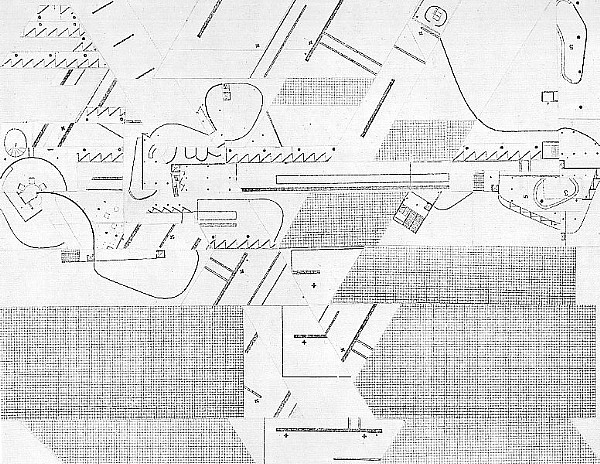

Provocative in the sense of now mentally overlapping the two design strategies, kind of like dimensionally enhancing the already multiple choices.
*Libeskind uses bits of Barcelona Pavilion, Tugendhat House (both Mies), Carpenter Center, Palais des Congres (both Le Corbusier).
Coincidently read this in The Autopoiesis of Architecture early this morning:
"...and Rem Koolhaas's Delirious New York celebrating Manhattan's 'culture of congestion' and its 'critical paranoid method' of radical programmatic and stylistic juxtaposition. The phenomena that Koolhaas found in New York--congestion and random juxtaposition--were violating the prevailing Modernist principles." (p. 130)
It seems that "congestion and random juxtaposition--were violating the prevailing Modernist principles" could be said for Libeskind's collage as well.
Maybe later today I'll take the La Villette plan and cut-and-paste it like a Libeskind collage.
While thinking of all this, I was reminded of something I wrote 2004.05.18 (for sure subliminally influenced by Koolhaas): "I like the list; like chapters, like lessons, like evolutionary stages, like different floors of a building I'd love to design, like a row of restaurants while you're perpetually hungry."
And finally, like the La Villette plan is the section of the New York Athletic Club flipped down, that tower for Dubai is an older Arab settlement flipped up.
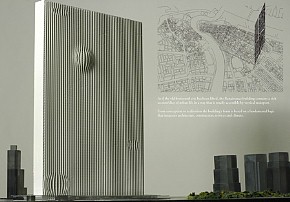
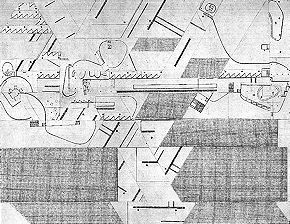
Would the Libeskind collage make for an interesting building section?
| |
2013.07.15 13:34
Why is everyone bashing OMA and Rem Koolhaas?
Since 2009.11.20, I like how OMA/Rem Koolhaas's Quartied les Halles (2003-04) helps me to imagine Quaestio Abstrusa Background No. 191 (2001.04.28) in 3-dimensional architectural form.
| |
2013.10.28 18:59
28 October
28 October 306: the Senate and the Praetorian Guard in Rome proclaim Maxentius as emperor princeps.
It could easily be said that the architecture of Rome (the city) under Maxentius represents the last flourish of genuine Classical in its true pagan milieu.
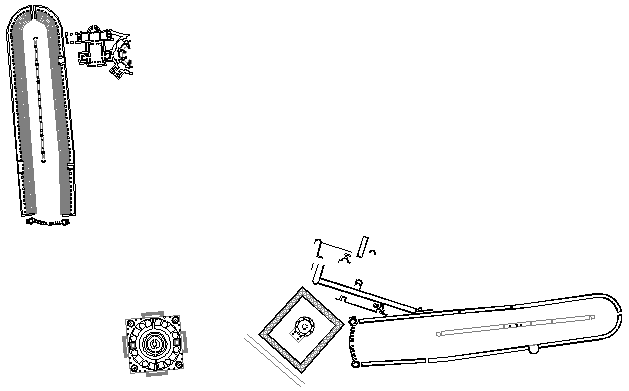
left: The Circus of Hadrian and the Mausoleum of Hadrian (135 AD), after Piranesi.
right: The Circus of Maxentius and the Mausoleum of Romulus (son of Maxentius) (c. 310 AD), on the Appian Way.
Both complexes, displayed here at the same scale with true north up, comprise the 'classic' Roman funereal paradigm of tomb, circus and dining hall, facilitating the "munus", a death rite, where death games and feasts accompanied the funeral day.
28 October 312: Maxentius offers battle with Constantine outside the gates of Rome near the Milvian Bridge. Maxentius suffers total defeat, himself drowning in the Tiber.
It is at this point that the architecture of Rome (the city) begins to represent a pagan/Christian hybrid, with stylistic influence coming from the North (Treves Augustum [today's Trier, Germany]), Constantine's Imperial capital, and from the East (Nicomedia [today's Izmet, Turkey]), the Roman Empire's power center since c. 280 AD.

left: The Circus of Maxentius and the Mausoleum of Romulus (son of Maxentius) (c. 310 AD), on the Appian Way.
center: The 'basilica' of Sts. Peter and Marcellinus (c. 314 AD) and the Mausoleum of Helena (mother of Constantine) (326 AD).
right: The 'basilica' of St. Agnes (c. 314 AD) and the Mausoleum of Constantina (daughter of Constantine) (c. 345 AD).
The three complexes, displayed here at the same scale with true north up, demonstrate how the tombs remained more or less the same, i.e., substantial round, domed structures, but the pagan funereal circus has morphed into a circus-shaped covered graveyard where feasts were held on the respective saint's death ('feast') day.
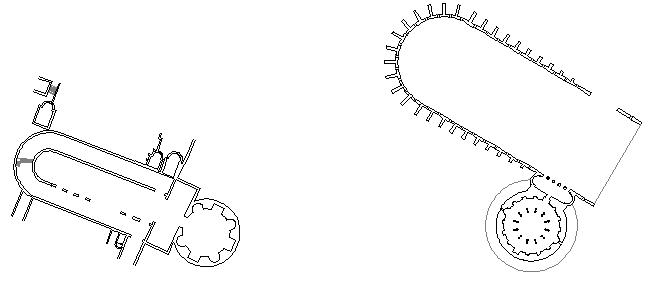
It is on record that the yearly commemorative feasts of saintly death days quickly evolved into quite exorbitant, if not all out drunken, several-day-long affairs, thus, by the beginning of the fifth century, Rome's somewhat unique circus-shaped basilica/graveyards were deemed inappropriate for 'church' architecture, closely coinciding with (St.) Augustine's writing of The City of God Against the Pagans.
|